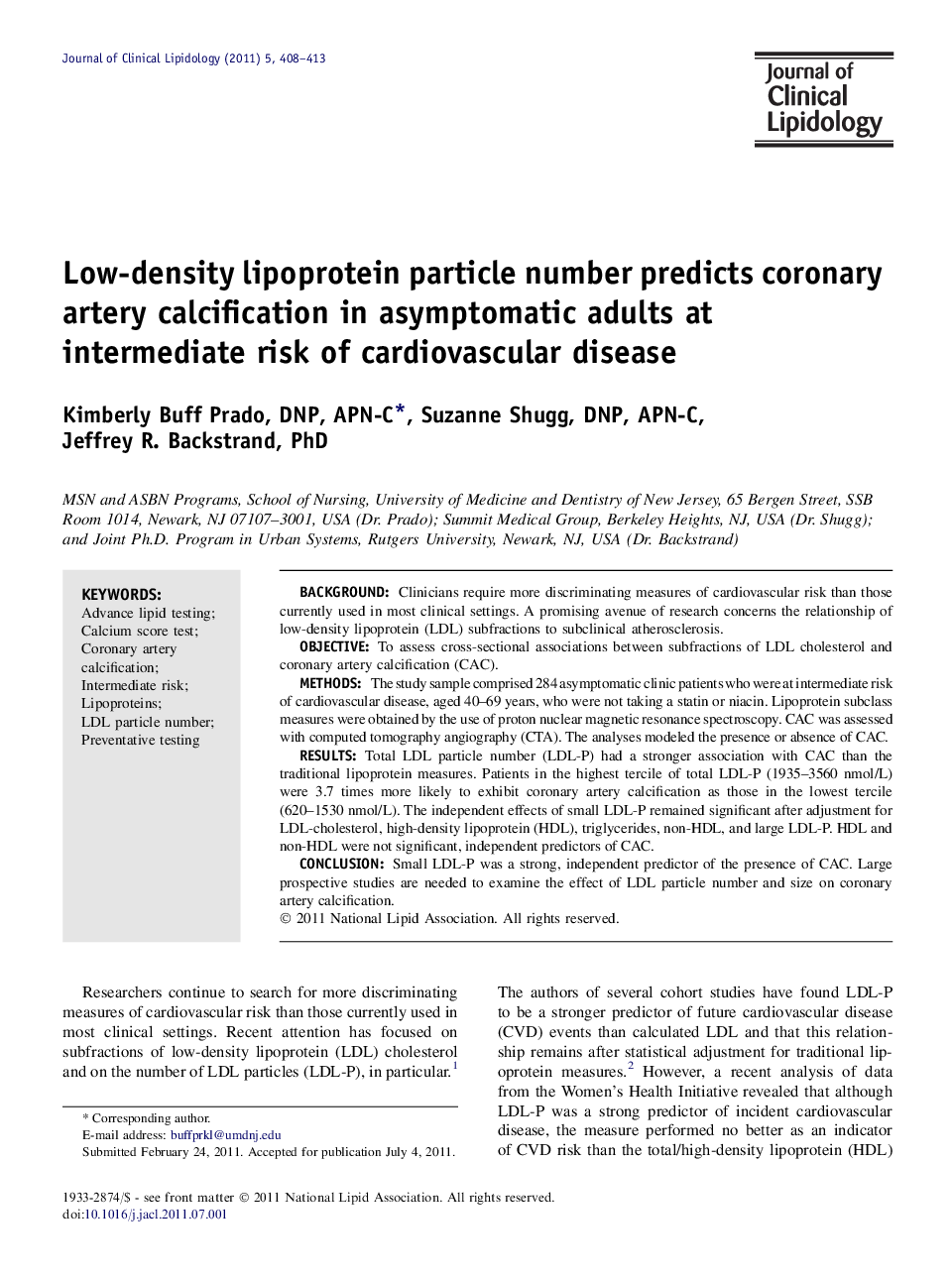| Article ID | Journal | Published Year | Pages | File Type |
|---|---|---|---|---|
| 2966349 | Journal of Clinical Lipidology | 2011 | 6 Pages |
BackgroundClinicians require more discriminating measures of cardiovascular risk than those currently used in most clinical settings. A promising avenue of research concerns the relationship of low-density lipoprotein (LDL) subfractions to subclinical atherosclerosis.ObjectiveTo assess cross-sectional associations between subfractions of LDL cholesterol and coronary artery calcification (CAC).MethodsThe study sample comprised 284 asymptomatic clinic patients who were at intermediate risk of cardiovascular disease, aged 40–69 years, who were not taking a statin or niacin. Lipoprotein subclass measures were obtained by the use of proton nuclear magnetic resonance spectroscopy. CAC was assessed with computed tomography angiography (CTA). The analyses modeled the presence or absence of CAC.ResultsTotal LDL particle number (LDL-P) had a stronger association with CAC than the traditional lipoprotein measures. Patients in the highest tercile of total LDL-P (1935–3560 nmol/L) were 3.7 times more likely to exhibit coronary artery calcification as those in the lowest tercile (620–1530 nmol/L). The independent effects of small LDL-P remained significant after adjustment for LDL-cholesterol, high-density lipoprotein (HDL), triglycerides, non-HDL, and large LDL-P. HDL and non-HDL were not significant, independent predictors of CAC.ConclusionSmall LDL-P was a strong, independent predictor of the presence of CAC. Large prospective studies are needed to examine the effect of LDL particle number and size on coronary artery calcification.
